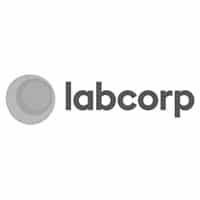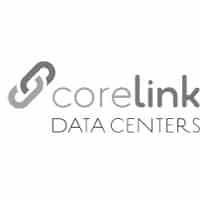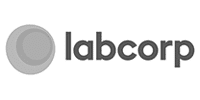 Technology is changing every second and what was on trend last year or the year before for data centers may be old news by now. With the end of 2018 and the beginning of 2019, it is time to look at what data center trends to expect for the new year. There are some trends that have topped the list for the last few years but with the growth of things like edge networks (Global Market Insights predicts the edge data center market will hit $13 billion by 2024) and the Internet of Things (IoT) (Forbes estimates the combined IoT market to hit $520 billion by 2021), we will see these trends really move towards the forefront in 2019 and in the next few years to come.
Technology is changing every second and what was on trend last year or the year before for data centers may be old news by now. With the end of 2018 and the beginning of 2019, it is time to look at what data center trends to expect for the new year. There are some trends that have topped the list for the last few years but with the growth of things like edge networks (Global Market Insights predicts the edge data center market will hit $13 billion by 2024) and the Internet of Things (IoT) (Forbes estimates the combined IoT market to hit $520 billion by 2021), we will see these trends really move towards the forefront in 2019 and in the next few years to come.
3 Data Center Trends for 2019 (and Beyond!)
1. Increased Shift Towards Colocation
Though it is important to note that corporate data centers are not necessarily going anywhere anytime soon, there will be an increased shift towards colocation in 2019 and beyond. Corporations have now had time to see the advantages and disadvantages of colocation and many are opting for the security, efficiency, and uptime that colocation can offer rather than having their own corporate data center.
 For so long, there was an unease about loosening the reigns, so to speak, on managing corporate data for both security and functionality reasons. However, colocation providers have focused on streamlining efficiency and functionality so that the end-experience for corporations, as well as the cost-savings, is exceedingly appealing. Data Center Knowledge elaborates on why there will be an increased shift towards colocation rather than enterprise data centers, moving forward, “Colocation providers expect to reel in a lot more enterprise business in 2019, as enterprises rethink infrastructure and retool, getting rid of as much on-premises data center space as they can, replacing it with cloud services and – when necessary – modern colocation facilities. As Clint Heiden, chief revenue officer at QTS, explained, enterprises in healthcare, financial, manufacturing, and other industries that built their own data centers about a decade ago are now realizing it can cost hundreds of millions of dollars to get those facilities up to modern standards. They’re also realizing that they need a lot less data center space for the same infrastructure, ‘making a refresh very cost-prohibitive,’ he added. Increasingly, they’re turning to colocation as the alternative, where they can both get up-to-date infrastructure and access to cloud providers, often at a lower cost than keeping everything in-house…To make themselves more useful to these companies, many colocation data center operators have been building digital tools to create a user experience and functionality that feels a lot like public cloud. The core principles here are abstraction of the physical, automation, microservices, APIs, easy software-based provisioning, and unified management of different types of infrastructure, be it cloud, colo, or on-prem.”
For so long, there was an unease about loosening the reigns, so to speak, on managing corporate data for both security and functionality reasons. However, colocation providers have focused on streamlining efficiency and functionality so that the end-experience for corporations, as well as the cost-savings, is exceedingly appealing. Data Center Knowledge elaborates on why there will be an increased shift towards colocation rather than enterprise data centers, moving forward, “Colocation providers expect to reel in a lot more enterprise business in 2019, as enterprises rethink infrastructure and retool, getting rid of as much on-premises data center space as they can, replacing it with cloud services and – when necessary – modern colocation facilities. As Clint Heiden, chief revenue officer at QTS, explained, enterprises in healthcare, financial, manufacturing, and other industries that built their own data centers about a decade ago are now realizing it can cost hundreds of millions of dollars to get those facilities up to modern standards. They’re also realizing that they need a lot less data center space for the same infrastructure, ‘making a refresh very cost-prohibitive,’ he added. Increasingly, they’re turning to colocation as the alternative, where they can both get up-to-date infrastructure and access to cloud providers, often at a lower cost than keeping everything in-house…To make themselves more useful to these companies, many colocation data center operators have been building digital tools to create a user experience and functionality that feels a lot like public cloud. The core principles here are abstraction of the physical, automation, microservices, APIs, easy software-based provisioning, and unified management of different types of infrastructure, be it cloud, colo, or on-prem.”
2. Edge Computing Grows
‘Edge network, ‘edge computing,’ and ‘edge data centers’ are not just phrases that sound cool, they are also a critical component of the future of the Internet of Things (IoT). The more we depend on the internet to be ‘always available’ for everything from data transmission to turning our lights on at home, the more dependent we are on data center uptime.
 With the increase in the IoT, the size of data is rapidly growing. As in, we are rapidly being outpaced and without edge computing, we could find ourselves in trouble sooner rather than later. Data Center Knowledge explains why edge computing will not just grow in 2019 and beyond, but become a critical component of data processing, transmission, and ultimately a core component of data centers moving forward, “Applying simple math should make it immediately clear there is simply not enough fiber in the ground to handle the growth of the wireline plus wireless internet. We’re soon going to run out of the type of connectivity we need to move the 80+ zettabytes of data we will have created and stored by 2025…As our connected devices become more mobile and more dispersed, their data must traverse both the wireline and wireless networks and they must rely on these two infrastructures working in concert—at very high levels of reliability and with very low, even machine scale, latencies.
With the increase in the IoT, the size of data is rapidly growing. As in, we are rapidly being outpaced and without edge computing, we could find ourselves in trouble sooner rather than later. Data Center Knowledge explains why edge computing will not just grow in 2019 and beyond, but become a critical component of data processing, transmission, and ultimately a core component of data centers moving forward, “Applying simple math should make it immediately clear there is simply not enough fiber in the ground to handle the growth of the wireline plus wireless internet. We’re soon going to run out of the type of connectivity we need to move the 80+ zettabytes of data we will have created and stored by 2025…As our connected devices become more mobile and more dispersed, their data must traverse both the wireline and wireless networks and they must rely on these two infrastructures working in concert—at very high levels of reliability and with very low, even machine scale, latencies.
By placing data centers at the very edge of the wireless network, at the base of cell towers and other locations on the infrastructure side of the wireless last mile, we can alleviate a great deal of the pressure on the network from applications and data that would otherwise have to traverse the wireline and wireless infrastructures…Even when data must be delivered beyond the edge, such as to a central data center for cold storage or national distribution, the edge facility can pre-process it at the edge. Workloads running on servers at the edge can evaluate the incoming data and deliver real-time decisions if necessary, while also running algorithms to reduce the quantity of data sent to a centralized data center by orders of magnitude, saving precious backhaul capacity…Building data centers at the edge of the last-mile network will allow the wired and wireless worlds to operate in tandem and will enable new classes of applications. These edge data centers will unlock the ability to deliver real-time wireless services even if they require sub 10-millisecond latencies or transport large amounts data.”
3. Liquid Cooling Stays ‘Hot’
There is no denying that advanced cooling techniques will be a focus in 2019 and beyond. Energy efficiency and sustainable data center cooling practices are a high priority. This is particularly true as we continue to see the IT equipment load and demand placed on cooling constantly increasing. There is a distinct need for energy efficient cooling practices in the data center and that calls for advanced cooling techniques, such as liquid cooling.
Liquid cooling has been a cooling technique employed by data centers of all sizes because it is sustainable and effective and that will not change in the foreseeable future. There is a high demand for IT equipment at all times in any data center. The Internet of Things (IoT) is only increasing and with the size of data increasing, the larger demand on processors and servers, and the continual shift in technology, a reliable cooling method is a must.
 There are many mandates placed on data centers to remain compliant with modern energy-efficient cooling practices and for that reason, liquid cooling is a popular option. Data Center Knowledge elaborates on the trend towards increased liquid cooling in data centers, “Traditionally reserved for mainframes and academic supercomputers, liquid cooling may soon be seeping into more enterprise data centers. New, more demanding enterprise workloads are pushing up power densities, leaving data center managers looking for more efficient alternatives to air-based cooling systems…Storage density continues to increase, and cooling storage efficiently can be hard. Much of the installed storage capacity in data centers consists of non-sealed hard disk drives, which cannot be cooled with liquid. Newer technologies, however, are more promising in that respect…There’s an additional benefit of improved HDD reliability, as immersing drives in cooling fluids will reduce the effects of heat and humidity on components…While not all edge data centers will be liquid-cooled, many will be designed to use it to support those heavy workloads in confined spaces, where traditional cooling options won’t be available, or in new deployments, where there’s no prerequisite to use legacy cooling. Because it lowers energy consumption, liquid cooling makes it easier to deploy edge sites in locations where high-capacity power feeds aren’t available…’Many people think this is just a solution for really high-density 60kW to 100kW per rack computing, but for our mainstream customers there are other significant benefits,’ Poulin said. Uptime Institute CTO Chris Brown said he was seeing interest in liquid cooling for general workloads rise. And that’s being driven by the promise of higher energy efficiency and lower operating costs.”
There are many mandates placed on data centers to remain compliant with modern energy-efficient cooling practices and for that reason, liquid cooling is a popular option. Data Center Knowledge elaborates on the trend towards increased liquid cooling in data centers, “Traditionally reserved for mainframes and academic supercomputers, liquid cooling may soon be seeping into more enterprise data centers. New, more demanding enterprise workloads are pushing up power densities, leaving data center managers looking for more efficient alternatives to air-based cooling systems…Storage density continues to increase, and cooling storage efficiently can be hard. Much of the installed storage capacity in data centers consists of non-sealed hard disk drives, which cannot be cooled with liquid. Newer technologies, however, are more promising in that respect…There’s an additional benefit of improved HDD reliability, as immersing drives in cooling fluids will reduce the effects of heat and humidity on components…While not all edge data centers will be liquid-cooled, many will be designed to use it to support those heavy workloads in confined spaces, where traditional cooling options won’t be available, or in new deployments, where there’s no prerequisite to use legacy cooling. Because it lowers energy consumption, liquid cooling makes it easier to deploy edge sites in locations where high-capacity power feeds aren’t available…’Many people think this is just a solution for really high-density 60kW to 100kW per rack computing, but for our mainstream customers there are other significant benefits,’ Poulin said. Uptime Institute CTO Chris Brown said he was seeing interest in liquid cooling for general workloads rise. And that’s being driven by the promise of higher energy efficiency and lower operating costs.”




























